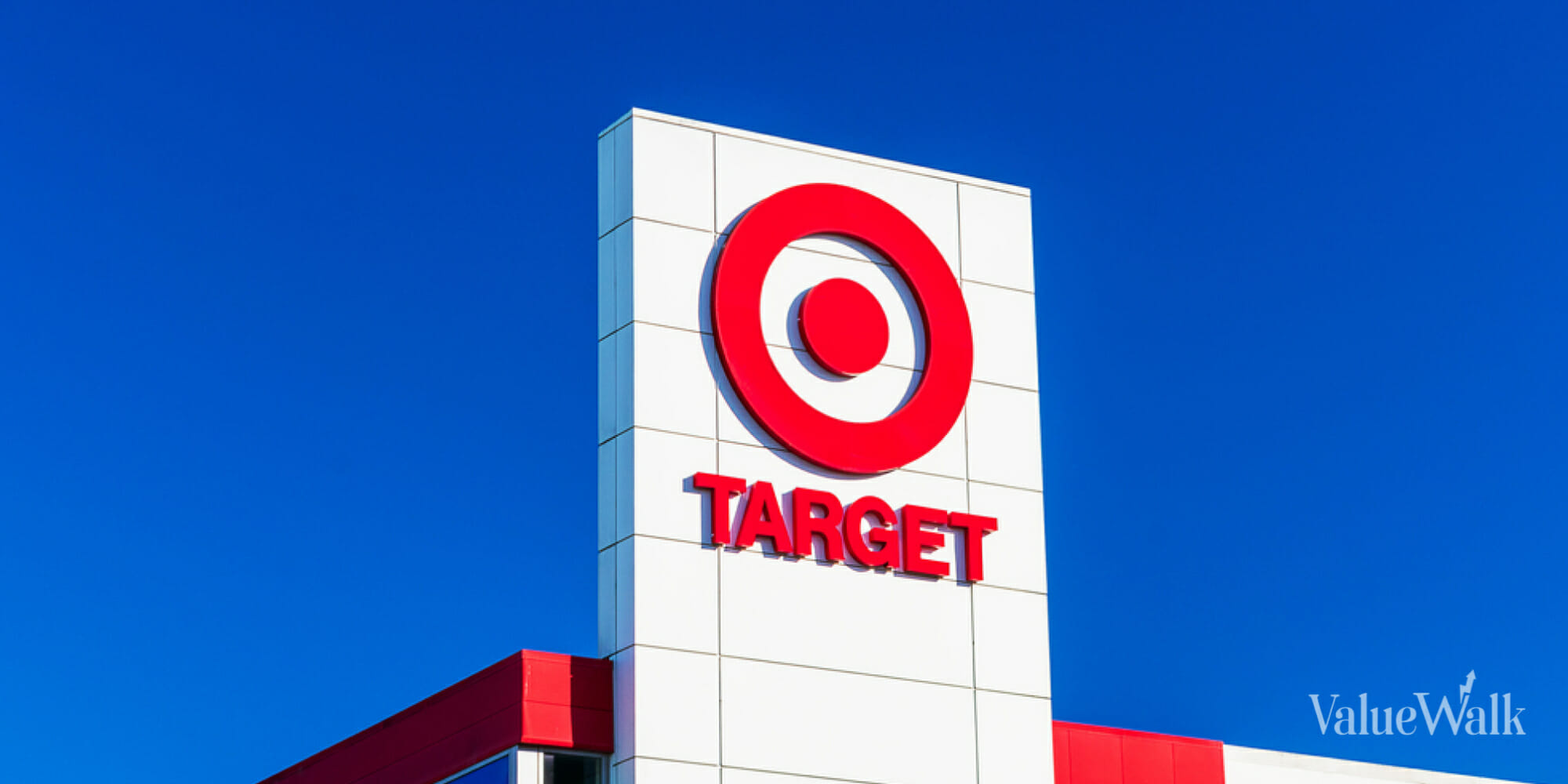Target Stock Erupts Higher as Falling Inventories Fuel Earnings Beat

Target Corporation (NYSE:TGT) reported stronger-than-expected earnings for the third quarter, sending its shares higher in early Wednesday trade.
Target’s results were better than feared as sales continued to decline. However, purchases in high-frequency categories like food and beauty contributed to supporting weaker customer spending.
Breaking Down Target’s Q3 Performance
Target reported an adjusted earnings per share of $2.10, crushing the expected $1.47. While revenue declined 4.2% on an annual basis to $25.4 billion, it still came in ahead of the Street at $25.24 billion.
Sales were reported at $25 billion, down 4.3% year-over-year as comparable sales fell 4.9%. Analysts were looking for third quarter sales of $24.88 billion and same-store sales falling 5.2%. For the same period last year, Target reported a 2.7% jump in comparable sales.
Digital sales fell 6%, still better than the expected decline of 10.3%. They now comprise 16.8% of total sales, down from 17.1% for the year-ago period.
Target said the customer transactions were down 4.1% YoY, while the average transaction amount fell 0.8%. Analysts were expecting a decline of 1.4% in the average transaction amount. Target said it operated 1,956 stores at the end of the quarter.
“In the third quarter, our team continued to successfully navigate our business through a very challenging external environment. While third quarter sales were consistent with our expectations, earnings per share came in far ahead of our forecast,” said Brian Cornell, chair and chief executive of Target.
The retailer generated $1.32 billion in operating income for the quarter, up 29% YoY and ahead of the expected $1 billion. The operating margin was reported at 5.2%, easily clearing the expectations of 3.9%. The gross margin, on the other hand, expanded by 270 basis points to 27.4% on an annual basis, ahead of the consensus of 26.3%.
For the current quarter (Q4), Target said it sees comparable sales “in a wide range around a mid-single digit decline.” The adjusted EPS is seen at $2.25 (up or down 35 cents), while analyst consensus stood at $2.23.
The company also stated that it is on track to invest nearly $5 billion in the business this year, focusing on developing its team, tools, technology, and capabilities to provide a differentiated guest experience.
At the end of Q3, Target’s inventory was 14% lower than the previous year, indicating a 19% reduction in discretionary category inventory. Falling inventory likely fueled a strong earnings beat and offset declining sales.
“A store can run more efficiently when their back rooms are free of inventory. A distribution center runs more efficiently, with fewer touches, when it’s not as full, too,” Chief Financial Officer Michael Fiddelke said on a call with reporters.
He also said that the retailer is “laser focused on moving both traffic and sales back into positive territory.”
Target paid dividends amounting to $507 million, compared to $497 million in the previous year, reflecting a 1.9% increase in the dividend per share. However, the company did not repurchase any stock in the third quarter, it said in the earnings release.
As of the end of the quarter, Target had approximately $9.7 billion of remaining capacity under the repurchase program approved by the Board of Directors in August 2021.
‘Very Challenging External Environment’
Target’s earnings report comes as investors braced for another retail sales report. Street estimates that retail sales edged lower by 0.2% in October, which would be a reversal from the strong 0.7% gain in September.
In October, employers added half as many workers as they did in September, and the unemployment rate has risen a half percentage point since reaching a multi decade low in April. Consumers are focusing on buying necessities, seeking lower prices, and delaying purchases.
In response to these challenges, Target said it is working to move both traffic and sales back into positive territory amid the industry-wide slowdown. While discretionary categories remain soft, Target’s Chief Growth Officer Christina Hennington, noted that trends have improved compared to the second quarter.
The company attributes this improvement to trendy merchandise, including new kitchenware, fall fashion apparel, and jewelry collaborations. Still, Target isn’t out of the woods yet.
Consumer spending in the United States is expected to decelerate as households face various challenges. The Federal Reserve’s decision to raise interest rates – reaching a 22-year high – has led to increased borrowing costs for mortgages, car loans, and credit card balances.
The slower economic activity is also weighing on consumers, who are also battling with slower wage growth and a decline in confidence about job prospects. Moreover, Americans have largely depleted the savings they accumulated early in the pandemic when government payments were distributed, and spending on many services was restricted.
An improving macroeconomic situation could help Target to easily top its Q4 guidance, which is issued amid a “very challenging external environment.” This would definitely help Target stock to continue recovering, with shares still in the red year-to-date despite Wednesday’s rally.
Summary
Target blew past analyst expectations for the third quarter and issued a profit forecast for the holiday quarter that was better than feared. The stock reacted positively to the Q3 earnings report as it was down 26% YTD through Tuesday’s close.

Comments are closed.